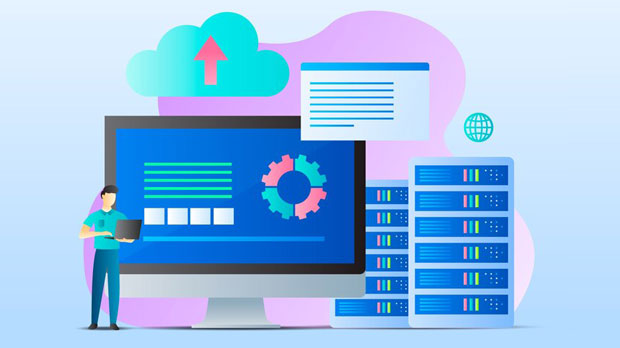In modern web architectures, the term "proxy" plays a crucial role, especially in the context of API gateways. A proxy in this context is an intermediary that handles requests between clients and servers, forwarding them while offering various services like load balancing, security, monitoring, and caching. By abstracting the communication, proxies improve system scalability, reliability, and security. This practice is particularly relevant for API gateways that manage large-scale APIs, enabling better control, optimization, and protection of data exchange between services. Understanding the Role of Proxies in API GatewaysAPI gateways act as a central point that manages incoming API requests, routes them to appropriate microservices, and then returns the responses to clients. A proxy is an essential component of an API gateway, as it helps streamline these operations. Essentially, it acts as a mediator between client requests and backend services, ensuring that requests are handled efficiently and securely.Proxies have a variety of functions that directly enhance the performance and security of API gateways. These include:1. Request Forwarding: Proxies route requests to appropriate backend services based on the URL or other metadata.2. Load Balancing: Proxies can distribute incoming requests across multiple servers to prevent any single server from becoming overwhelmed, ensuring high availability.3. Caching: They store responses for frequently accessed data, improving response time and reducing the load on backend services.4. Security: Proxies can add a layer of security by filtering requests, managing authentication, and protecting against malicious traffic.5. Monitoring and Analytics: Proxies can capture and log API traffic, providing valuable insights into usage patterns, performance metrics, and potential security threats.How Proxies Optimize API Gateway FunctionalityThe proxy’s role extends beyond just handling requests. When integrated into an API gateway, proxies can significantly improve the system’s scalability and flexibility. Below are key ways in which proxies optimize the functionality of API gateways:1. Simplifying Communication: Instead of clients having to interact with multiple microservices directly, the proxy simplifies this by offering a single entry point to the entire system. This reduces complexity for clients and improves overall communication efficiency. 2. Enhanced Security: By centralizing security measures, proxies in API gateways ensure that sensitive information, like API keys and credentials, is protected. They enforce authentication and authorization protocols, safeguarding both the server and client.3. Managing Traffic Flow: Proxies are effective in traffic management by controlling the rate and frequency of requests that reach the backend services. This ensures that resources are not overwhelmed, maintaining system stability and performance.4. Scalability: Proxies facilitate horizontal scaling by distributing traffic evenly across multiple instances of microservices. This ensures that as the demand on the system grows, the infrastructure can scale seamlessly without sacrificing performance.5. Improved Fault Tolerance: In the event of a service failure, proxies can reroute traffic to healthy instances, ensuring the system remains functional. This minimizes downtime and ensures a high level of reliability for end-users.The Benefits of Using Proxies in API GatewayIntegrating proxies within an API gateway yields several significant benefits that make them an indispensable component in modern application architectures:1. Reduced Latency: By caching frequent requests, proxies reduce the time it takes to fetch data from backend servers. This results in faster response times and improved user experiences.2. Centralized Management: With proxies, administrators can manage, configure, and monitor all API requests in one place. This centralized control simplifies maintenance, monitoring, and updates.3. Load Balancing and Traffic Distribution: A proxy balances traffic across multiple backend servers, optimizing resource utilization. It ensures that no server is overwhelmed with too many requests, reducing the risk of server crashes or performance bottlenecks.4. Better Security and Privacy: Proxies shield the backend infrastructure by preventing direct exposure to external clients. They can intercept malicious requests, enforce access control policies, and manage authentication, ensuring sensitive data is protected.5. Reduced Complexity: Developers can focus on building and optimizing microservices while the proxy handles cross-cutting concerns like security, monitoring, and traffic management. This reduces the development complexity and accelerates time to market.Challenges and Considerations when Implementing Proxies in API GatewaysDespite their benefits, proxies in API gateways do come with challenges and require careful consideration during implementation:1. Latency Overhead: Introducing an additional layer (the proxy) between clients and backend services can potentially add latency to requests. While proxies can improve performance in certain areas, developers must ensure that this additional layer does not negatively impact response times.2. Single Point of Failure: Since the proxy is a critical part of the infrastructure, it can become a single point of failure if not properly managed. To mitigate this risk, proxies must be designed with high availability in mind, often with failover mechanisms and redundancy built into the system.3. Complexity in Configuration: While proxies simplify communication, their configuration can become complex as the number of microservices grows. Proper setup and ongoing management are necessary to ensure proxies continue to function effectively as the system scales.4. Security Risks: Although proxies add a layer of security, they can also become targets for attackers. Ensuring that the proxy is properly secured and kept up to date with the latest security patches is essential to maintaining system integrity.5. Traffic Monitoring and Analytics: Proxies provide monitoring capabilities, but managing and interpreting the large volumes of data generated can be overwhelming. It’s essential to have tools in place that can analyze traffic patterns and detect anomalies quickly.Real-World Use Cases of Proxies in API GatewaysSeveral real-world scenarios illustrate the practical application of proxies within API gateways:1. Microservices Architecture: In microservices environments, proxies help manage requests between a large number of microservices, enabling efficient routing, load balancing, and security.2. E-Commerce Websites: For large e-commerce platforms, proxies can handle high traffic volumes, ensuring scalability while securing payment information and customer data.3. Cloud-based Applications: In cloud-native applications, proxies help manage the complexity of distributed services by providing a single entry point for clients to access resources, with built-in security and monitoring.4. Mobile Applications: Mobile applications that interact with multiple backend services can leverage proxies to ensure faster, more reliable connections, while also securing user data.Proxies in API gateways are indispensable tools in modern software architecture, providing vital functions like traffic routing, load balancing, caching, security, and monitoring. They play a critical role in optimizing the performance and scalability of large-scale systems while maintaining a high level of security. Despite some challenges such as added latency and the complexity of configuration, their benefits far outweigh the drawbacks when properly implemented. Proxies not only simplify communication between clients and services but also ensure the resilience and efficiency of the entire system, making them a cornerstone of API gateway practices in modern application development.
Jun 23, 2025


































































